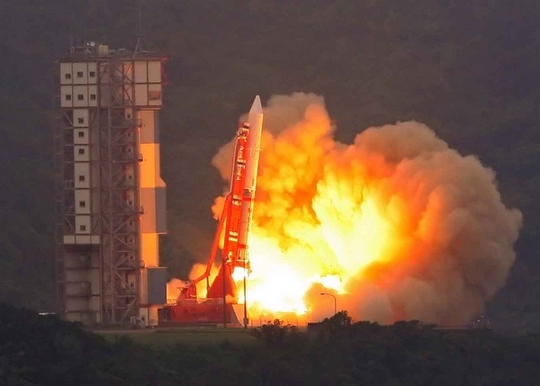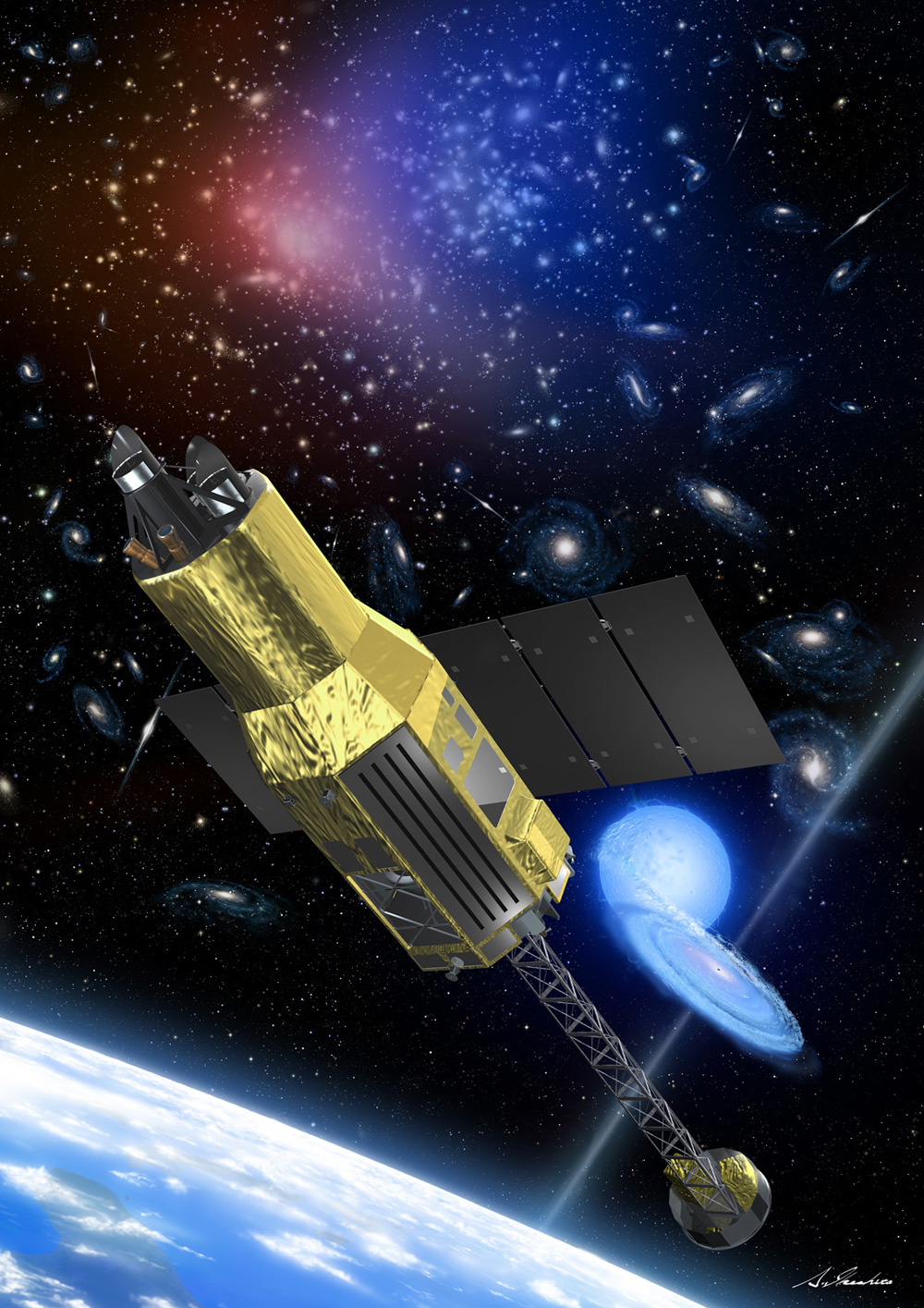Instruments carried aloft by rockets, balloons, and satellites allow us to observe celestial signals in the infrared, ultraviolet, X-ray, and gamma-ray frequencies, which are strongly attenuated by the atmosphere. We can thus obtain novel understanding of the Universe that is not available by ground-based observations in the optical or radio frequencies. In particular, X-rays provide an excellent probe into many fascinating phenomena, including solar coronae, stellar flares, white dwarfs under nuclear burning, expanding supernova remnants, rapidly rotating pulsars, gas-swallowing black holes and neutron stars, mysterious ultra-luminous X-ray sources in nearby galaxies, active galactic nuclei (super-massive black holes) at the centers of many galaxies, hot plasmas confined by the gravity of dark matter in clusters of galaxies, and gamma-ray bursts occurring at cosmological distances.
In collaboration with JAXA, RIKEN, Hiroshima University and other institutions, we developed the Hard X-ray Detector, and put it onboard the JAXA's X-ray satellite Suzaku which was launched successfully in 2005 July (Fig.1). Our Suzaku results on Galactic objects include; an accurate mass determination of white dwarfs, detailed diagnostics of hot plasmas and particle acceleration in several supernova remnants, a discovery of fast heating (up to a billion degree) of the matter that is about to disappear into black holes, and estimates of magnetic fields of various neutron stars. In particular, we have detected enigmatic hard X-ray signals from magnetars, namely, a kind of neutron stars with ultra-strong magnetic fields. Jointly using optical information, we extend our X-ray research results to extra-Galactic objects, such as an accurate quantification of the gas stream feeding active galactic nuclei, and the discovery of cosmological infall of galaxies in clusters via their interactions with the X-ray emitting hot plasmas.
The JAXA's ASTRO-H satellite (Fig.2), an epoch-making successor to Suzaku, is being developed under an extensive international collaboration towards its launch scheduled in 2015. We participate in the development of three onboard instruments; the Soft X-ray Imager, the Hard X-ray Imager, and the Soft Gamma-ray Detector. These activities are carried out in full collaboration with many domestic and overseas institutions. For details, please refer to http://astro-h.isas.jaxa.jp.






